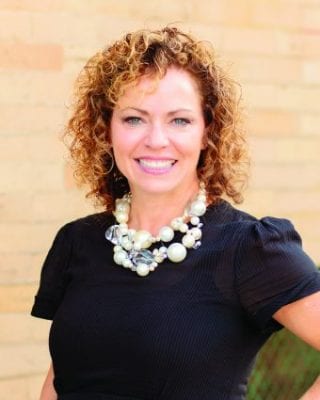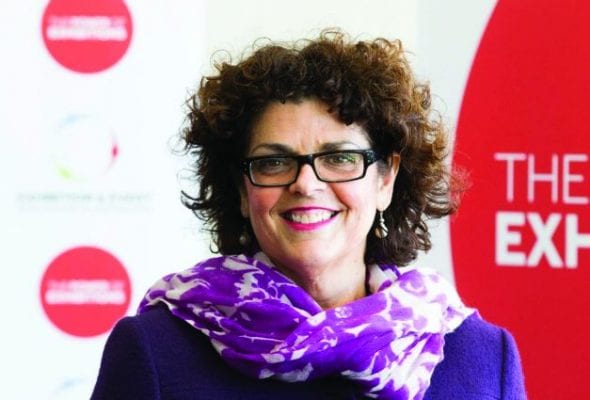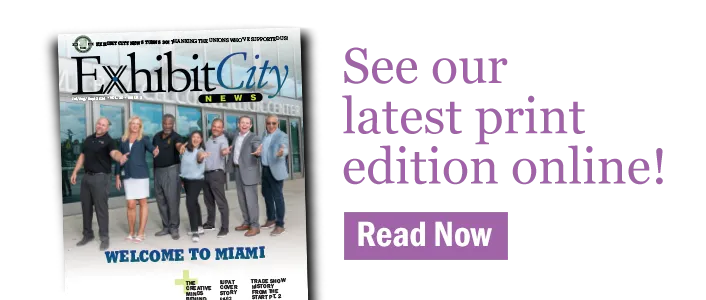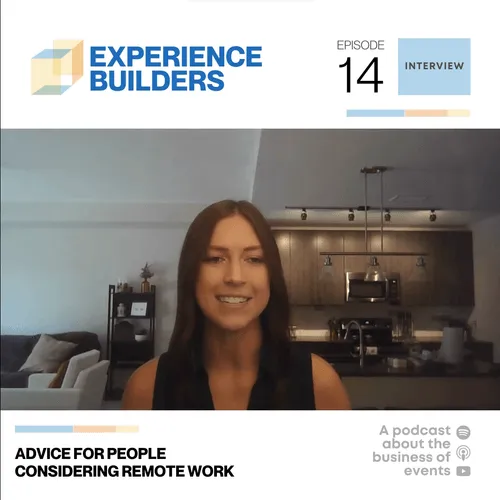Pictured: Exhibition and Event Association of Australasia (EEAA) Chief Executive Joyce DiMascio
by Cynthya Porter
The adage that it’s a man’s world is possibly nowhere more true than in the exhibition universe, where, despite an abundance of women in the industry, studies find that women in leadership lag in pay and numbers by an embarrassing margin behind their male peers. It’s time for change, a growing collective demands, but, to achieve that, it might help to understand how the industry developed and how some women broke the mold to pioneer the transformation underway.
There is not some sinister, purposefully suppressive design to the imbalance, most seem to agree, with the more likely answer that it is a remnant of a time when everything was a man’s world, the exhibition industry included. As corporate secretaries took on meeting planning roles and men went to college for things like business management and industrial design, it’s likely positions became somewhat entrenched on the typical show floor over the years more as a matter of opportunity than anything else.
But, though the Mad Men era is long over and as many women as men are entering the workforce with college degrees, the exhibition industry has curiously not quite righted itself. Consider research compiled by the International Association of Exhibitions & Events, for example, which found that women in leadership positions that ranged from manager to owner earned, on average, between 17 and more than 100 percent less than men in the same positions, with the gap widening the further up the corporate ladder a woman climbed. Tellingly, just 16 percent of those surveyed with the title of president, executive director, CEO, CFO, COO and the like were women, and they were paid on average 62 percent less than men in the same roles. Only 14 percent of the businesses surveyed were owned or partly owned by women, and, on the whole, they make 117 percent less than men.
Conversely, an estimated 80 percent or so of exhibit managers and event planners are women, suggesting that the industry’s mix overall is gender neutral, unless you count the fact that the majority of women are at the bottom of it.
 Kelli Glasser (pictured left) knows what the bottom looks like. When she first started working at her father’s company, Exhibit Concepts, Glasser was a teenage girl whose most important responsibility was getting everyone’s order right for the frozen yogurt place down the street. Then again, she was just there for a part-time job and had no intention of staying in the business. A few years later when she learned that her job prospects were less than exciting with her four-year Latin degree, Glasser found herself back under her father’s wing, this time taking on many of the company’s more pressing needs such as the way it functioned.
Kelli Glasser (pictured left) knows what the bottom looks like. When she first started working at her father’s company, Exhibit Concepts, Glasser was a teenage girl whose most important responsibility was getting everyone’s order right for the frozen yogurt place down the street. Then again, she was just there for a part-time job and had no intention of staying in the business. A few years later when she learned that her job prospects were less than exciting with her four-year Latin degree, Glasser found herself back under her father’s wing, this time taking on many of the company’s more pressing needs such as the way it functioned.
In her role overseeing their sales and product lines, Glasser found her super power: organization, and she thrived. However, she wasn’t planning on staying. “I still didn’t think I’d be a lifer in it,” she says, “not because of the industry, but because it’s hard to work for your parents.” Now she’s owner, president, and CEO, having seen the inside and outside of every position there on her way up.
Because she ascended through a family-owned company, Glasser acknowledges that she may not have had to confront some of the same prejudicial work environments others might experience elsewhere. “No one is going to be mean to the boss’ daughter,” she admits. But there is no question, she adds, that once outside the doors of her company, she was swimming into a sea of men who were not accustomed to sitting at the C-suite table with women. At Exhibitor magazine’s inaugural Executive Roundtable – an annual, invitation-only meeting that gathers the top tier of industry executives together to discuss issues – Glasser was the only woman in the room, not that she cared. “I was always with the boys, even in high school, because I was into math and sciences,” she explains. “And I wanted to be No. 1 – I didn’t care about gender roles.”
 Dismissing gender discrimination, even when it is foisted upon you, is elemental to breaking old molds for leadership and power in the industry, with Donna Schultz (pictured right), president and CEO of Mirror Show Management, as living proof. Schultz was a young account executive at a tradeshow house 32 years ago, and, by all accounts, was doing a good job. “One day the president took me aside and said, ‘Donna, I think you’re really great at what you do, and if you were a man you could be really successful in this line of work,’” Schultz says. “That’s how male-dominated the industry was at that time. The flip-side of this story is that his candid assessment gave me the jolt I needed to strike out on my own and start Mirror Show Management. And it instilled in me a life-long commitment to make sure that women in my company would be afforded all the opportunities they might not get elsewhere.”
Dismissing gender discrimination, even when it is foisted upon you, is elemental to breaking old molds for leadership and power in the industry, with Donna Schultz (pictured right), president and CEO of Mirror Show Management, as living proof. Schultz was a young account executive at a tradeshow house 32 years ago, and, by all accounts, was doing a good job. “One day the president took me aside and said, ‘Donna, I think you’re really great at what you do, and if you were a man you could be really successful in this line of work,’” Schultz says. “That’s how male-dominated the industry was at that time. The flip-side of this story is that his candid assessment gave me the jolt I needed to strike out on my own and start Mirror Show Management. And it instilled in me a life-long commitment to make sure that women in my company would be afforded all the opportunities they might not get elsewhere.”
Thanks in part to pioneers like Glasser and Schultz taking hammers to the glass ceiling, opportunities for women have grown exponentially over recent decades. To wit, in 2016, Glasser was the president of the Exhibit Designers and Producers Association, a 64-year-old organization that was a male stronghold in the exhibit design world for decades. This year, Schultz is the president, and, in fact, the last three presidents have all been women. In many modern leadership circles, women have a strong presence, and Glasser and Schultz stress that they feel they are generally working in an industry now where they have earned and receive respect from peers regardless of gender.
For Katie McTammany (pictured left) , entering the exhibition industry as a young designer four years ago bore little resemblance to the starts of Glasser and Schultz. In part, she says, that may be because she went directly from college to work for Schultz at Mirror Show Management. “I am lucky to be able to say that I have never been stereotyped because of my gender,” she says, nor has she ever felt victim to a “good ol’ boy” environment. “I have never once experienced this culture due to the fact that I work for a company owned by a woman. In fact, I didn’t even realize the industry had such a large male influence until I began to attend industry events and could see that, in many ways, we are the exception to the rule. By the way, I love being part of the exception.”
, entering the exhibition industry as a young designer four years ago bore little resemblance to the starts of Glasser and Schultz. In part, she says, that may be because she went directly from college to work for Schultz at Mirror Show Management. “I am lucky to be able to say that I have never been stereotyped because of my gender,” she says, nor has she ever felt victim to a “good ol’ boy” environment. “I have never once experienced this culture due to the fact that I work for a company owned by a woman. In fact, I didn’t even realize the industry had such a large male influence until I began to attend industry events and could see that, in many ways, we are the exception to the rule. By the way, I love being part of the exception.”
Change, demonstrated by stories like McTammany’s, is evident. But the significant pay gap persists and the degree of actual change within the exhibition workforce is anyone’s guess, says Michelle Bruno, because no one is really measuring it. A journalist who has written extensively on exhibition and event industry topics, Bruno has become a pundit on the matter of gender equity in the industry, or the lack thereof. “Research, other than anecdotal, devoted to the number of women working in exhibitions and their current work experiences – access to career-enhancing opportunities, gaps in pay, and rate at which women climb through the ranks into leadership, for example – is nonexistent,” Bruno says. “I’ve discovered in researching women that not all of our industry trade associations ask members to identify gender, so the numbers of women in the industry in various positions or in certain salary ranges can’t be tracked.”
Associations around the globe are making strides to recognize gender disparities and address them with forums, committees and events. IAEE is spearheading one of the larger efforts, hosting an annual Women’s Leadership Forum in the United States that organizers are looking to expand into Thailand, Mexico and Canada. The sold-out 2018 event brought women together to listen to speakers proffering wisdom and advice about how to have a positive impact in one’s own career, much of which, they say, involves shucking off the gender biases that still exist today.
Angst over the disparate workplace also gave rise to WINiT, a nonprofit organization that provides career development programs and services for women in the meeting, event, travel and exhibition industries. Through its programming, the effort has grown to a 3,000-member-strong network working to push the conversation of industry equity to the forefront.
Similarly, a European effort dubbed the Women in Exhibitions Network has recently been launched by Oana Cipca, a business and international exhibition manager for MECC Maastricht exhibition hall in the Netherlands. The inaugural event in March drew women from five European countries, with more gatherings planned that will move around to different European cities. Like the IAEE Women’s Leadership Forum, programming at the Women in Exhibitions Network meetings include things such as education and leadership topics, best-practices stories, market insights, workplace challenges and networking.
 And south of the equator, the Exhibition and Event Association of Australasia (EEAA) brought attention to the issues surrounding women in the industry with a breakfast on International Women’s Day in March. Under the banner of themes that included #PressforProgress and “Leave No Woman Behind,” the event was intended to start a conversation that is overdue, organizers said, because just having breakfast once a year is not going to be enough. “This is not just a breakfast for women,” says EEAA chief executive Joyce DiMascio (pictured right). “If we want to continue to attract talent–women and men–it is important that we create an industry that values and respects those who are part of it.”
And south of the equator, the Exhibition and Event Association of Australasia (EEAA) brought attention to the issues surrounding women in the industry with a breakfast on International Women’s Day in March. Under the banner of themes that included #PressforProgress and “Leave No Woman Behind,” the event was intended to start a conversation that is overdue, organizers said, because just having breakfast once a year is not going to be enough. “This is not just a breakfast for women,” says EEAA chief executive Joyce DiMascio (pictured right). “If we want to continue to attract talent–women and men–it is important that we create an industry that values and respects those who are part of it.”
Despite growing attention to the matter of gender bias around the globe, researchers for the World Economic Forum found that the gender gap had depressingly widened in 2017 rather than narrowed, with country-by-country results in the areas of health, education, politics and economic progress provided in the annual Global Gender Gap Report. It is the first time since the research began in 2006 that results had on average worsened rather than improved, researchers said, and it is not because of third-world countries as one might be tempted to suspect. Rather, the most marked backslide in forward progress happened in the area of economic participation and opportunity, and none of the world’s leading industrialized nations even cracked the top ten most equitable countries.
Bruno is encouraged to see momentum in the dialogue around the issue, but said it is not enough. “Talking about the issues, meeting face-to-face to exchange ideas, and learning how to move one’s personal agenda forward is an excellent start,” she says. “But the industry needs to take the next step. The industry needs a scorecard to prove that advancing women is more than just talk.
“The industry appears to be more focused on helping women enhance their skills (negotiating raises, behaving like a leader, becoming more valuable to the organization, etc.) than fighting discrimination, which could make research on the latter topic less of a priority,” Bruno continues. “It’s almost as if we’ve skipped the ‘what’s really going on’ phase and jumped right into the ‘let’s just be the best we can be’ phase. I’ve also noticed an undercurrent of ‘we don’t want to make men feel bad’ in some of the discussions regarding gender inequality in the exhibitions industry, which may inhibit research efforts.”
There are a multitude of strategies women can employ to help themselves advance even as the industry still works towards equity, but Glasser, Schultz, and McTammany agree that the most imperative among them is to be really good at what you do. Schultz’s ability to listen and her eye for talent, Glasser’s organizational prowess and McTammany’s curiosity and creative drive–these are the things that the women say are moving them ahead in their positions.
More advice for success, particularly in the whirlwind of the exhibition world? “Be a giver, not a taker,” Schultz says. “Keep your perspective long. Do a great job today and tomorrow will take care of itself.” McTammany adds that being open to constantly learning is key, especially in her design world, as is asking a lot of questions. Glasser believes that a self-assessment is the first step towards success, as it’s not an industry for everyone. “It’s really, really important to know who you are, know what your strengths are, and know what you gravitate to, and you’re going to make better decisions,” she says. “Also, my mom told me from a very young age, don’t ever let anyone know you can make coffee.”
This column originally appeared in the July/August 2018 issue of Exhibit City News magazine, pp. 30-33. For more pictures and original layout, visit http://issuu.com/exhibitcitynews/docs/ecnflipbook_julyaugust2018_web?e=16962537/62860459


























